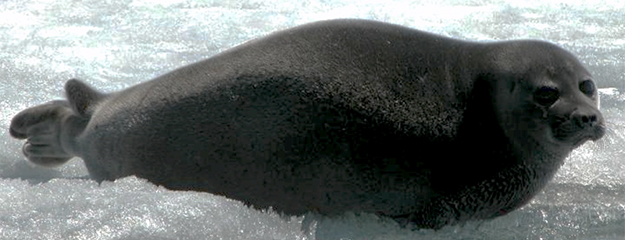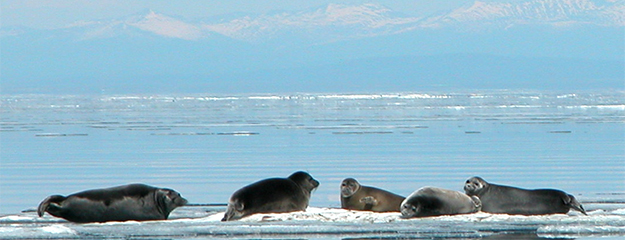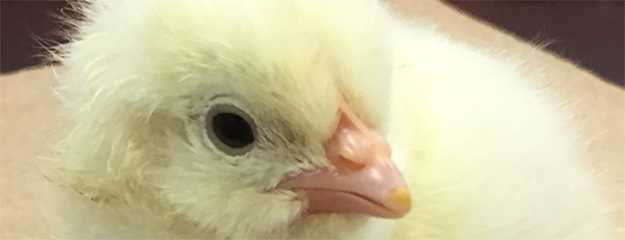
We are working on the mechanism of toxic effects by environmental contaminants in a variety of wild and model animals. Development of novel bioassay methods to explore bioactive/toxic contaminants is also a scope of our research. Our goal is to assess the risk of contaminants in the wild population of species of concern.
Keywords: molecular toxicology, nuclear receptor, cytochrome P450, species diversity, sensitivity, genetic polymorphism, chemical contamination, persistent organic pollutants, dioxins, arsenic, risk assessment, wildlife
Keywords: molecular toxicology, nuclear receptor, cytochrome P450, species diversity, sensitivity, genetic polymorphism, chemical contamination, persistent organic pollutants, dioxins, arsenic, risk assessment, wildlife

■Obituary Notice: Professor Shinsuke Tanabe, Professor Emeritus of Distinction
On June 30, 2025, Professor Shinsuke Tanabe, Professor Emeritus of Distinction at Ehime University, passed away. We extend our deepest respect and heartfelt condolences.
On June 30, 2025, Professor Shinsuke Tanabe, Professor Emeritus of Distinction at Ehime University, passed away. We extend our deepest respect and heartfelt condolences.
■Publication of Our New Paper
Our study investigating the effects of exposure to oxytetracycline on the liver proteome of red seabream (Pagrus major) has been published in Science of the Total Environment.
※The paper (open access) can be viewed on the following site;
https://doi.org/10.1016/j.cbpc.2022.109325
Our study investigating the effects of exposure to oxytetracycline on the liver proteome of red seabream (Pagrus major) has been published in Science of the Total Environment.
※The paper (open access) can be viewed on the following site;
https://doi.org/10.1016/j.cbpc.2022.109325
■Publication of Our New Paper
Our study investigating the effects of exposure to bisphenol A during the embryonic development period on the liver transcriptome and lipidome of rat offspring has been published in Science of the Total Environment.
※The paper (open access) can be viewed on the following site;
http://dx.doi.org/10.1016/j.scitotenv.2022.153990
Our study investigating the effects of exposure to bisphenol A during the embryonic development period on the liver transcriptome and lipidome of rat offspring has been published in Science of the Total Environment.
※The paper (open access) can be viewed on the following site;
http://dx.doi.org/10.1016/j.scitotenv.2022.153990
We are pleased to let you know that our article titled "Assessment of binding potencies of polychlorinated biphenyls and polybrominated diphenyl ethers with Baikal seal and mouse constitutive androstane receptors: Comparisons across species and congeners" is now published online in Science of the Total Environment.
To read the article, access the following site;
https://authors.elsevier.com/a/1ds-aB8ccr0z2
To read the article, access the following site;
https://authors.elsevier.com/a/1ds-aB8ccr0z2
We are pleased to let you know that our article titled "Directly Reprogrammed Neurons as a Tool to Assess Neurotoxicity of the Contaminant 4-Hydroxy-2’,3,5,5’-tetrachlorobiphenyl (4’OH-CB72) in Melon-Headed Whales" is now published online in Environmental Science & Technology.
To access the article, click on the following link;
https://doi.org/10.1021/acs.est.1c01074
The article is introduced in the following sites.
EurekAlert!
https://www.eurekalert.org/news-releases/923464
AlphaGalileo
https://www.alphagalileo.org/Item-Display/ItemId/211022
Asia Research News
https://www.asiaresearchnews.com/content/reprogrammed-whale-neurons-predict-neurotoxicity-environmental-pollutants
To access the article, click on the following link;
https://doi.org/10.1021/acs.est.1c01074
The article is introduced in the following sites.
EurekAlert!
https://www.eurekalert.org/news-releases/923464
AlphaGalileo
https://www.alphagalileo.org/Item-Display/ItemId/211022
Asia Research News
https://www.asiaresearchnews.com/content/reprogrammed-whale-neurons-predict-neurotoxicity-environmental-pollutants
We are pleased to let you know that our article titled "2,3,7,8-Tetrachlorodibenzo-p-dioxin prompted differentiation to CD4+CD8-CD25+ and CD4+CD8+CD25+ Tregs and altered expression of immune-related genes in the thymus of chicken embryos" is now published online in Ecotoxicology and Environmental Safety.
To read the article, access the following site;
https://authors.elsevier.com/sd/article/S0147-6513(21)00058-0
To read the article, access the following site;
https://authors.elsevier.com/sd/article/S0147-6513(21)00058-0
We are pleased to let you know that our article titled "Effects on the liver transcriptome in Baltic salmon: contributions of contamination with organohalogen compounds and origin of salmon" is now published online in Environmental Science & Technology
To read the abstract, access the following site;
https://dx.doi.org/10.1021/acs.est.0c04763
To read the abstract, access the following site;
https://dx.doi.org/10.1021/acs.est.0c04763
We are pleased to let you know that our article titled "Effects on the liver lipidome of rat offspring prenatally exposed to bisphenol A" is now published online in Science of the Total Environment.
To read the paper, access the following site (free of charge until January 12, 2021;
https://authors.elsevier.com/a/1c7PcB8ccoPCv
To read the paper, access the following site (free of charge until January 12, 2021;
https://authors.elsevier.com/a/1c7PcB8ccoPCv
We are pleased to let you know that our article titled "Effects of tris(2-chloroethyl) phosphate exposure on chicken embryos in a shell-less incubation system" is now published online in Ecotoxicology and Environmental Safety.
To read the paper, access the following site (it is free until October 29, 2020);
https://authors.elsevier.com/a/1biyFXad0Vspd
To read the paper, access the following site (it is free until October 29, 2020);
https://authors.elsevier.com/a/1biyFXad0Vspd
Our recent paper, titled In vitro cytotoxicity and risk assessments of environmental pollutants using fibroblasts of a stranded finless porpoise (Neophocaena asiaeorientalis), is introduced by the following sites;
- EurekAlert!
https://eurekalert.org/pub_releases/2020-07/eu-cdi072020.php - AlphaGalileo
https://www.alphagalileo.org/Item-Display/ItemId/195321 - Asia Research News
https://www.asiaresearchnews.com/content/cell-death-porpoises-caused-environmental-pollutants - Archives of Ehime University research achievements
(E)https://research.ehime-u.ac.jp/basic_life_science/20200720-01.html
(J)https://research.ehime-u.ac.jp/ja/basic_life_science/20200720-01.html - Press release of Ehime University research achievements
https://www.ehime-u.ac.jp/data_relese/data_relese-127126/ - Kankyo tenbo dai, National Institute for Environmental Studies, Japan
https://tenbou.nies.go.jp/news/jnews/detail.php?i=29919
We are pleased to let you know that our article titled " The AHR1-ARNT1 dimerization pair is a major regulator of the response to natural ligands, but not to TCDD, in the chicken" is now published online in Ecotoxicology and Environmental Safety.
To read the abstract, access the following site; https://doi.org/10.1016/j.ecoenv.2020.110835
To read the abstract, access the following site; https://doi.org/10.1016/j.ecoenv.2020.110835
We are pleased to let you know that our article titled "In vitro cytotoxicity and risk assessments of environmental pollutants using fibroblasts of a stranded finless porpoise (Neophocaena asiaeorientalis)" is now published online in Environmental Science & Technology.
To read the abstract, access the following site; https://dx.doi.org/10.1021/acs.est.9b07471
To read the abstract, access the following site; https://dx.doi.org/10.1021/acs.est.9b07471
We are pleased to let you know that our article titled "Effects of prenatal bisphenol A exposure on the hepatic transcriptome and proteome in rat offspring" is now published online in Science of the Total Environment.
To read the abstract, access the following site; https://doi.org/10.1016/j.scitotenv.2020.137568
To read the abstract, access the following site; https://doi.org/10.1016/j.scitotenv.2020.137568
We are pleased to let you know that our article titled "Assessment of risks of dioxins for aryl hydrocarbon receptor-mediated effects in polar bear (Ursus maritimus) by in vitro and in silico approaches" is now published online in Environmental Science & Technology.
To read the abstract, access the following site; https://pubs.acs.org/doi/10.1021/acs.est.9b05941
To read the abstract, access the following site; https://pubs.acs.org/doi/10.1021/acs.est.9b05941
Our latest research paper is introduced in the following web sites.
- EurekAlert!
https://www.eurekalert.org/pub_releases/2019-03/eu-bao032719.php - AlphaGalileo
https://www.alphagalileo.org/Item-Display/ItemId/177124 - asia Research News
http://researchsea.com/html/article.php/aid/12550/cid/1/research/science/ehime_university/investigating_how_chemicals_behave_in_russia_s_baikal_seals.html
We are pleased to let you know that our article, "Ishibashi, H., Kim, E.Y., Arizono, K., Iwata, H. (2018): In vitro assessment of activation of Baikal seal (Pusa sibirica) peroxisome proliferator-activated receptor α by polybrominated diphenyl ethers. Environmental Science & Technology, 52(20), 11831-11837", is published online.
To access the article, click on the following link;
URL: https://pubs.acs.org/doi/10.1021/acs.est.8b02501
To access the article, click on the following link;
URL: https://pubs.acs.org/doi/10.1021/acs.est.8b02501
We are pleased to let you know that our article, "Kim, E.Y., Inoue, N., Koh, D.H., Iwata, H. (2019): The aryl hydrocarbon receptor 2 potentially mediates cytochrome P450 1A induction in the jungle crow (Corvus macrorhynchos). Ecotoxicology and Environmental Safety, 171 (2019) 99?111", is published online.
To access the article, click on the following link;
URL: https://doi.org/10.1016/j.ecoenv.2018.12.037
To access the article, click on the following link;
URL: https://doi.org/10.1016/j.ecoenv.2018.12.037
We are pleased to let you know that our article, "Ishibashi, H., Hirano, M., Kim, E.Y., Iwata, H. (2019): "In vitro and in silico evaluations of binding affinities of perfluoroalkyl substances to Baikal seal and human peroxisome proliferator-activated receptor α. Environmental Science & Technology, 53, 2181-2188", is published online.
To access the article, click on the following link;
URL: https://pubs.acs.org/doi/10.1021/acs.est.8b07273
To access the article, click on the following link;
URL: https://pubs.acs.org/doi/10.1021/acs.est.8b07273
We are pleased to let you know that our article titled "Effects of 4-Hydroxy-2,3,3',4',5-pentachlorobiphenyl (4-OH-CB107) on Liver Transcriptome in Rats: Implication in the Disruption of Circadian Rhythm and Fatty Acid Metabolism" is now published online in Toxicological Sciences.
To access the article, click on the following link;
URL: https://academic.oup.com/toxsci/advance-article/doi/10.1093/toxsci/kfy123/5000034?guestAccessKey=79773a44-5c59-48c5-b8d2-345a3197f6bf
To access the article, click on the following link;
URL: https://academic.oup.com/toxsci/advance-article/doi/10.1093/toxsci/kfy123/5000034?guestAccessKey=79773a44-5c59-48c5-b8d2-345a3197f6bf
We are pleased to let you know that our article titled “Effects on the hepatic transcriptome of chicken embryos in ovo exposed to phenobarbital” is now published online.
To access the article, click on the following link which is available before July 10, 2018;
https://authors.elsevier.com/a/1X4~z_3Mt6S1IA
To access the article, click on the following link which is available before July 10, 2018;
https://authors.elsevier.com/a/1X4~z_3Mt6S1IA
LaMer/Leading Academia in Marine and Environment Pollution Research
We invite you to the application for collaboration researches and joint meetings through LaMer project for the fiscal year 2017.
http://lamer-cmes.jp/en/shared-use-2
We invite you to the application for collaboration researches and joint meetings through LaMer project for the fiscal year 2017.
http://lamer-cmes.jp/en/shared-use-2
New paper released
Hirakawa, S., Imaeda, D., Nakayama, K., Udaka, M., Kim, E-Y., Kunisue, T., Ogawa, S., Matsuda, T., Matsui, S., Petrov, E.A., Batoev, V.B., Tanabe, S., Iwata, H. (2011). Integrative assessment of potential effects of dioxins and related compounds in wild Baikal seals (Pusa sibirica): Application of microarray and biochemical analyses. Aquatic Toxicology, 105(1-2), 89-99.
Hirakawa, S., Imaeda, D., Nakayama, K., Udaka, M., Kim, E-Y., Kunisue, T., Ogawa, S., Matsuda, T., Matsui, S., Petrov, E.A., Batoev, V.B., Tanabe, S., Iwata, H. (2011). Integrative assessment of potential effects of dioxins and related compounds in wild Baikal seals (Pusa sibirica): Application of microarray and biochemical analyses. Aquatic Toxicology, 105(1-2), 89-99.
Biwako Prize For Ecology to Hisato Iwata
New paper released
Ishibashi, H., Kim, E-Y., Iwata, H. (2011). Transactivation potencies of the Baikal seal (Pusa sibirica) peroxisome proliferator-activated receptor α by perfluoroalkyl carboxylates and sulfonates: Estimation of PFOA induction equivalency factors. Environmental Science and Technology, 45(7), 3123-3130.
Ishibashi, H., Kim, E-Y., Iwata, H. (2011). Transactivation potencies of the Baikal seal (Pusa sibirica) peroxisome proliferator-activated receptor α by perfluoroalkyl carboxylates and sulfonates: Estimation of PFOA induction equivalency factors. Environmental Science and Technology, 45(7), 3123-3130.








